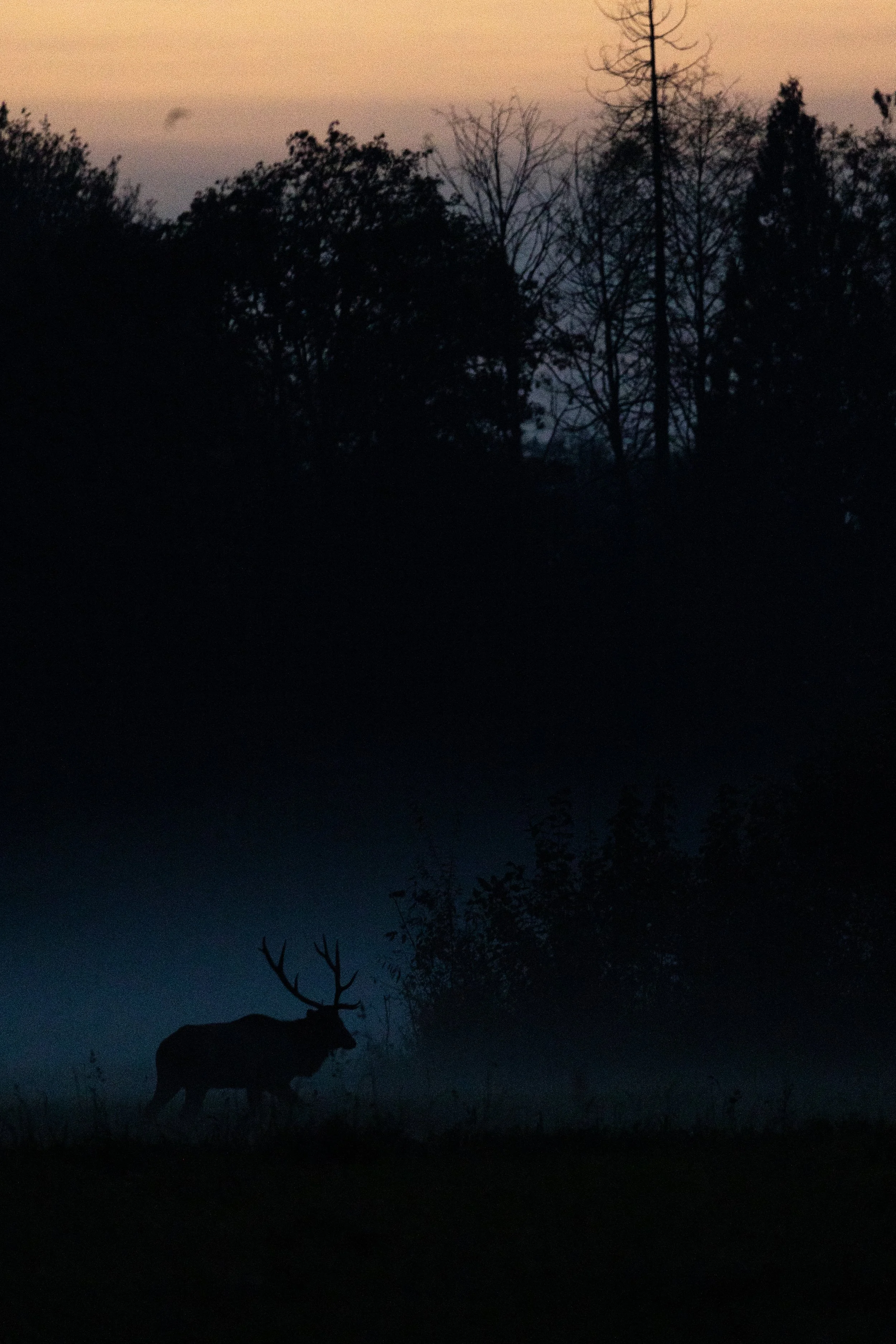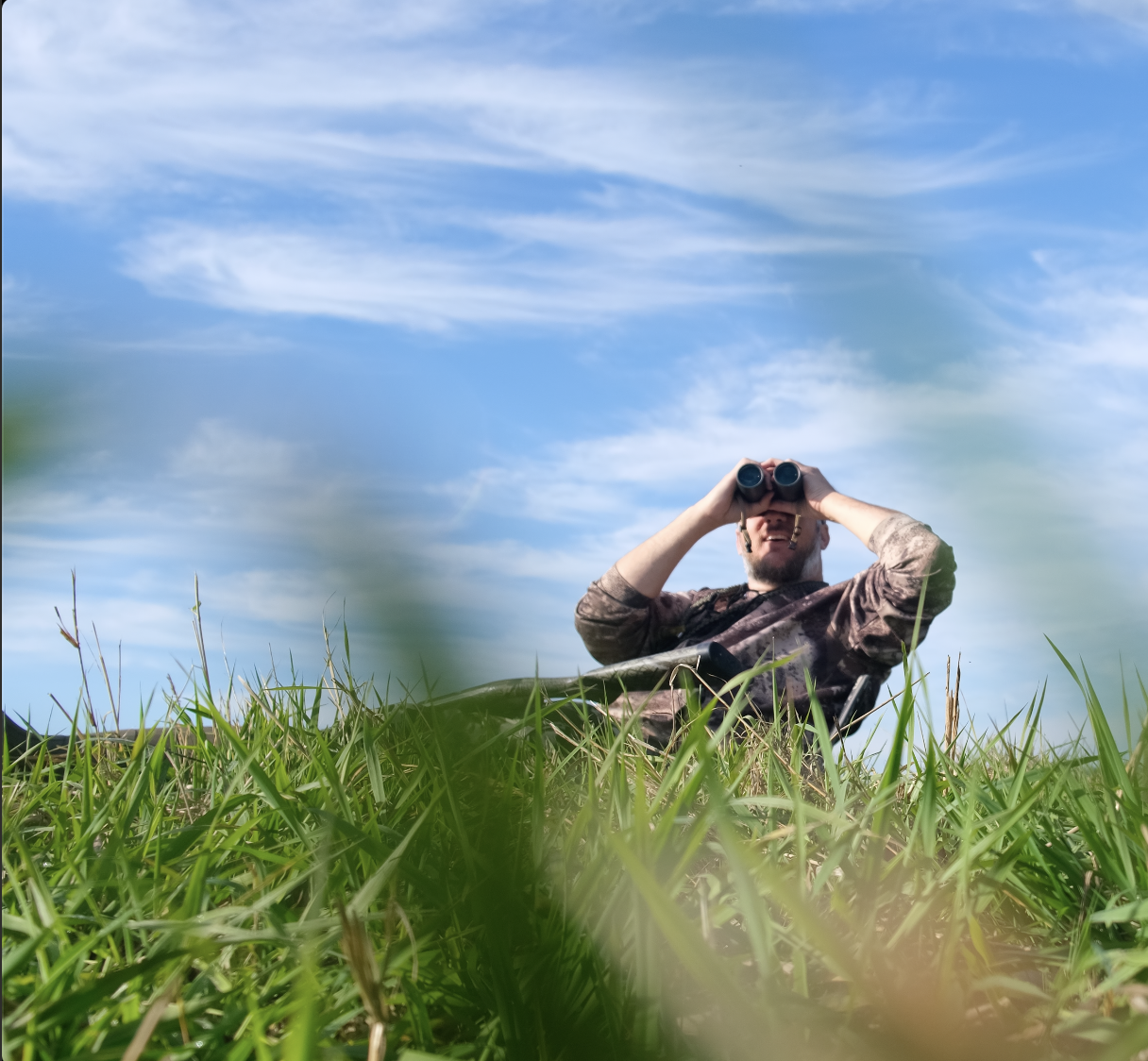Oh, Deer: Chronic Wasting Disease
A disease sweeping the U.S. is turning deer into zombies, and Washington State is its next Victim
Photo by Jesse Paull
Story by Josh Maritz // Photos by Ben Maritz and Jesse Paull
December 14, 2024
Jeff Holbrook treads through Ebey Island, an estuarine peatland, with his shotgun slung from his left shoulder. He is wrapped in camo, his eyes are covered in tint and a baseball cap – ‘Washington Backcountry Hunters and Anglers’ – tops his head. His feet shielded in scuba-grade neoprene.
The sky above is spotted with white wispy streamers indicative of cirrus clouds.
"Watching for birds on the horizon, that's life, man,” Holbrook says. “In the short term, there’s going to be more access, and hunters are going to be more blown away. More access to tags, maybe a longer season?” He isn’t referencing ducks; he’s talking about bucks.
Holbrook has been hunting for his entire life. But one hunt on his brother’s early-generation potato family farm stands out for all the wrong reasons.
Holbrook was an hour south of Butte between the snow-topped hills of western Montana. It was early November and the rut had just about begun. Staring down the scope of his rifle, he saw a beautiful young buck.
“He was a young punk, full of spunk, chasing doe around,” Holbrook remembers. “A beautiful-looking deer. Until I shot him.”
Jeff Holbrook, left, and Josh Maritz discuss Chronic Wasting Disease on Ebey Island. //Photo by Ben Maritz
It was a clean shot, 150 yards away. But unbeknownst to Holbrook that shot would be the last he fired on his brother’s family farm.
That deer had chronic wasting disease.
***
In the rolling knolls of Spokane, 100 miles from the border of Montana, are black bears, yellow-bellied marmots and the ever-so-rare moose that took the month-long journey from the Selkirk Mountains. But more often than not you’ll see white-tailed deer, a hunter’s harvest for at least 200 meals.
Overpopulation, predators and habitat loss have long been deer’s biggest threat. This past August, that all changed when a deer was discovered dead in a neighborhood in northern Spokane.
That deer, like the one Holbrook shot, had chronic wasting disease.
This mysterious wasting syndrome is a fatal disease that affects deer, elk, moose and other animals in the Cervidae family. It’s been nicknamed the ‘zombie disease’ since it often leaves animals drooling, stumbling and with an unmistakable blank stare.
The disease has steered clear of Washington for 57 years since its first detection in a captive deer in Colorado.
This map shows the current extent of CWD in the US, and demonstrates its rapid spread since 2000. // Map by Isaac Becker
Holbrook, born and raised in the Pacific Northwest, grew up in a small town in southern Idaho. His parents taught him and his brother their tradition of harvesting meat, from hunting birds and deer to casting and reeling in fish. He now lives in Monroe with his three children and wife, but for the past ten years has chosen his brother’s farm as his premiere deer hunting ground.
That ended a year ago when he shot that fateful young buck.
Washington is one of the most recent states to detect chronic wasting disease, following its West Coast neighbor California, which detected its first case in May 2024. In total, 36 states and four Canadian provinces have cases, ranging from the Texas Panhandle to northern Alberta, reaching Upstate New York and as far west as the Sierra Nevadas in California.
All of the state's attention is on Spokane, where the disease appeared. Self-service kiosks have popped up along the eastern Washington-Idaho border for hunters who want to test their deer. Most of the greater Spokane area requires that any dead deer be tested, along with other regulations restricting baiting and feeding.
For almost 30 years, Washington scientists have been researching chronic wasting disease. The Washington Department of Fish and Wildlife has a page dedicated to informing the public about the condition.
The ailment is a degenerative prion disease found in some mammals. These diseases primarily involve deterioration of the brain but can also affect the eyes and other organs, according to the National Institute of Health. The disease causes normal proteins to become misshapen, spreading to other proteins. This eventually causes the central nervous system to destroy itself.
A deer wanders through the woods. //Photo by Jesse Paull
“Prions are not living organisms. They're not bacteria, viruses, or parasites. Those prions stay infectious for a decade easily,” said Margaret Wild, professor at Immunology & Infectious Disease Graduate Faculty at Washington State University. “We shouldn't think of prions as being titanium, as if they're never going to go away. Still, they're much more persistent on the landscape than other types of pathogens like viruses or bacteria.”
The disease spreads through saliva, urine, feces and antler velvet. Deer with the disease often migrate, continuing the spread.
There is no known case of humans contracting chronic wasting disease. But as a precaution, the Washington State Department of Health and the Centers for Disease Control and Prevention recommend that people not eat any animal that tests positive for the condition or appears sick.
Science does not rule out human contraction.
“How it moves across the landscape, how hunters contribute to the spread, and to what extent are just some things that would be great to understand better,” said Melia Devivo, head research scientist studying the disease at the Washington Department of Fish and Wildlife. “I don't know if we truly know how long it lasts out in the landscape, but long enough to create epidemics.”
There is currently no cure for chronic wasting disease. State officials published a contingency plan in 2021 in the case a deer was found infected. They updated that plan in August 2024 when they discovered their first case.
“The disease has the greatest potential to negatively impact wild cervid populations long-term if not proactively addressed and diligently managed,” according to the plan.
Hunters play a pivotal role in that plan.
“Hunters are our best tool to monitor and document where this disease is. We absolutely need them to submit samples,” said Devivo. “If we get enough samples and we're fairly confident on where this disease is located and its extent, we can have better management tools to really pinpoint how to manage this locally and not potentially burden hunters statewide. The less we know, the more aggressive and broad we must be with our regulations because we simply don't know the risk.”
Hunters are less likely to hunt if the disease becomes established in a population because of uncertainty, which in turn could decrease an agency's capacity to manage the disease, according to a study by researcher Jerry Vaske at Colorado State University.
Hunters can help support disease management activities financially through license purchases and are valuable resources for obtaining samples for testing. Almost all of the testing in Washington goes directly to the Washington Animal Disease Diagnostic Laboratory at Washington State University.
“We have had to jump five times from 600-ish tests per year to a few 1000 tests,” said Korakrit Poonsuk, Clinical Assistant Professor and Immunodiagnostic Section Head at the Washington Animal Disease Diagnostic Laboratory. “We have really prepared for this scenario. We have a lot more staff trained, and we update our system to get the test result back to the submitter as fast as we can. We also hire a lot of student workers to help with the process during the hunting season.”
Washington Backcountry Hunters and Anglers are another strong force backing state efforts to address the problem.
“We’re actively trying to support the biologists and the staff at the Department of Fish and Wildlife in their efforts so that their science and processes are respected by the general public,” said Josh Wilund, Secretary of the Backcountry Hunters and Anglers Washington Chapter.
Jeff Holbrook looks out for ducks on Ebey Island. //Photo by Ben Maritz
In 2023, they partnered together on an incentive program to encourage hunters to submit samples from harvested animals to be tested.
“We saw a pretty decent uptick in the number of hunters who were submitting samples,” Wilund said.
The more samples, the better.
“From a holistic standpoint, whether it's somebody who loves watching wildlife or somebody who appreciates hunting. What these animals provide, from influencing plant diversity, serving as prey for predators and dispersing seeds– these animals are critical, and we love them,” Wilund said.
Spreading the word on a deadly disease is like telling a friend you’re sick. It’s vital.
Staci Lehman, Communications Manager at the Washington Department of Fish and Wildlife, is in charge of just that, getting the word out.
“When this popped up, it moved to the top of the priority list. We’ve spent a lot of time getting the word out there,” Lehman said. “We've done everything from blog posts, social media posts, news releases, tons of interviews, videos, presentations to groups and putting flyers up anywhere we can find: public access areas, wildlife areas, the post office to a coffee shop.”
Once established in an area, there are no known instances of chronic wasting disease being eradicated without human intervention. There is one instance of the disease being eradicated with human intervention: New York.
In 2005, the disease was discovered in Upstate New York. Together, the New York State Department of Environmental Conservation and the New York State Department of Agriculture and Markets were able to eradicate the disease. They implemented a swift, intensive and comprehensive $1 million testing and culling operation, according to the Department of Environmental Conservation.
“In a situation like eastern Washington, we have chronic wasting disease to the north of us, in British Columbia, and east of us in Idaho,” Wild said. “It's very difficult to think that this could be an elimination kind of approach. The objective is to limit the spread, so the actions that are taken are trying to reduce the number of cases and the likelihood to spread.”
***
For hunters like Jeff Holbrook, how the state handles this disease will affect his lifelong passion. It weighs on his mind, even on days like today when he’s in his beloved outdoors.
Holbrook lounges back in his barely visible chair covered by reed canary grass with his hands resting in his pockets. His duck call made no noise that day, neither did the ducks.
Contemplating all the effects chronic wasting disease could have on Washington, one concern loomed – spread over the Cascades into the dense, lush evergreen of Western Washington.
“If we get CWD in Western Washington, that’s it. That’s our deer herd… There’s no good way to eradicate it; you can’t test it, you can’t vaccinate, there’s nothing,” Holbrook said. “It’s wholly new; that’s the problem.”
A deer looks up at the sky. //Photo by Jesse Paull






